Chili, I tell the woman mixing rice with her bare hands in a small bowl. “I want some chili.”
She looks at me worriedly. She clearly knows more about chilies than I do. Myanmar chilies are hot, she tries to tell me with her eyes. I am relentless. I desire chili. I have seen locals bite into them in between mouthfuls of rice and pork, alternating it with raw garlic. I want to know what it tastes like.
She hands me a plate of tiny green chilies and small cloves of unpeeled garlic. I have a new request – red chili flakes. I am on a suicide mission clearly, but damn me if I am going to give up. I have established myself in a mini-chair at a mini-table at a street-side food stall, enjoying the sounds of slurping green tea from the next table.
I have been ambitious with my order too – rice and pork and chicken (with chili flakes) and salad…and soup. I want to eat it all. The portions are tiny and I am confident of my appetite.
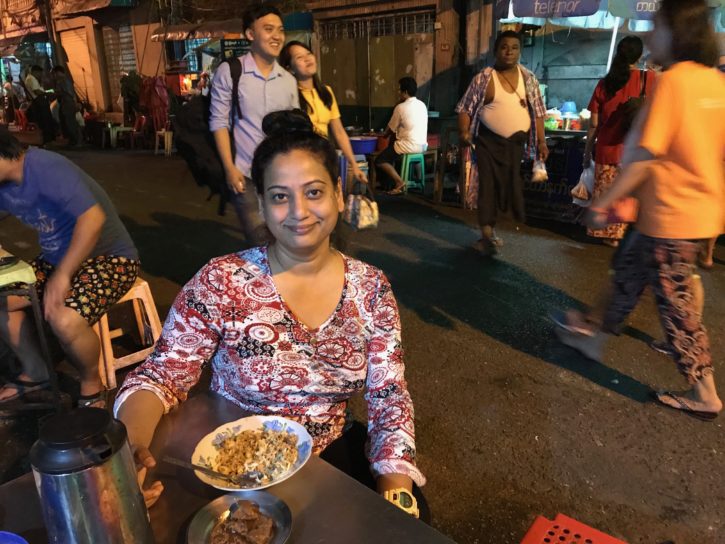
A few minutes later, it all appears, my ambitious order. I dig into it happily, ready to challenge the fiery chili. After all I am Indian. Chilies are friends, to say the least. They appear in all our foods – all the time. I am ready to take on the chilies of Myanmar.
The soup is hot and delicious, although I cannot tell what it is made of. I slurp greedily, not caring if the sounds invites raised or curious eyebrows. I remember that I am in Yangon, Myanmar’s former cosmopolitan capital, and that ever since I arrived I have been greeted with sounds of spitting, hawking and such like. Slurping soup in the street could hardly offend the local sensibility.
Check where to go in Myanmar here.
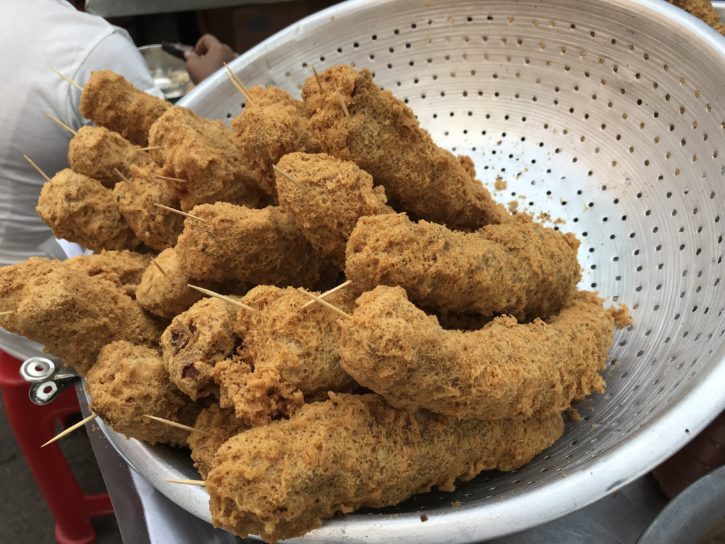
I roll a piece of pork into the white rice and push it into my mouth. It is delicious – different somehow. Then expertly I bite into the chili, followed by a quick bite of raw garlic. My tongue is adapting to new flavours rather quickly. The resulting mixture of rice, pork, raw garlic, green chili is queer – somehow.
I am beginning to think I made a mistake, but I work my way through the plate of rice and stand up to pay. My legs have gone to sleep. It is a wonder I am able to stand up at all.
The food cost me Kyat2000 or roughly 1.3USD. I ignore the panic in my tummy as I push past Chinatown’s determined crowd walking on the streets – it is the month of celebration – it is the Chinese New Year – the year of the pig. I feel a little humbled thinking of the animal I have just consumed.
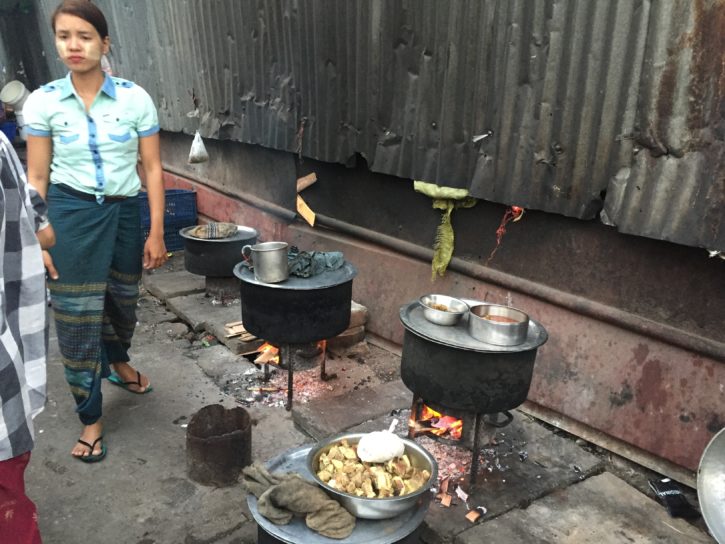
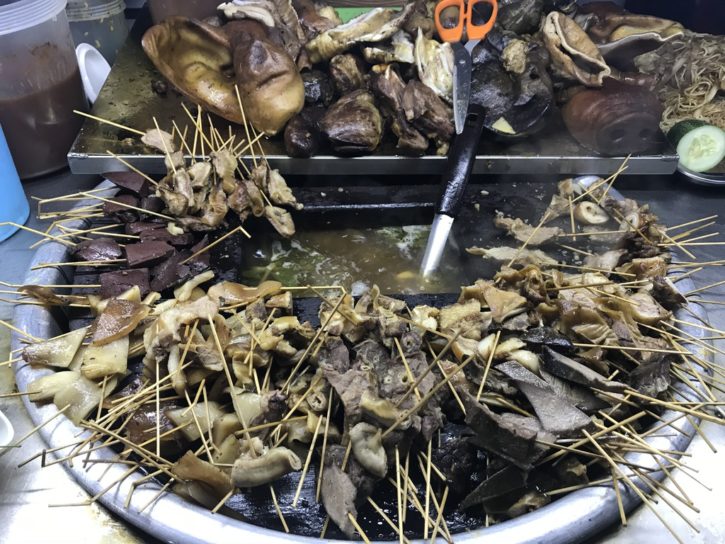
Street food is unique
Maybe I didnt do so well with my choice of street food, but I will say this – There is something remarkably different about Yangon’s street food. It is different and unique.
Yangon’s Chinatown area could well be the food lovers paradise. I take a tour of Chinatown the next evening I am here and I am blown away by the sheer variety of food found on the streets.
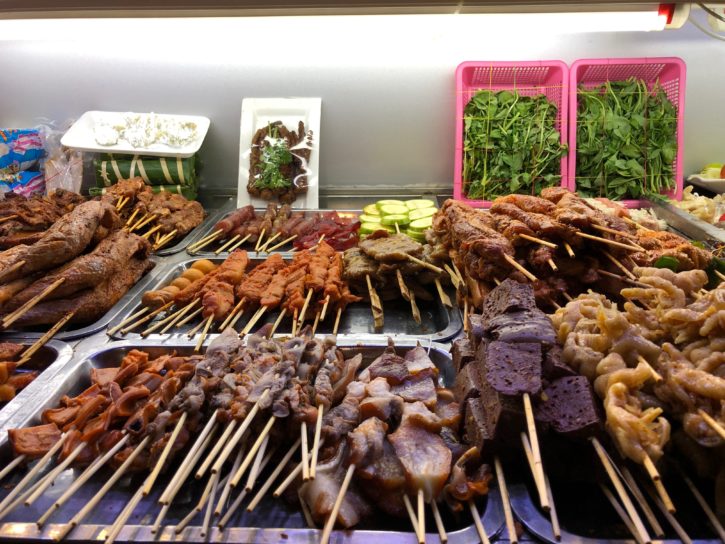
The area has a lot of food variety – delicious shan noodles, fried street foods (similar to Indian pakoda), fried rice, insects and innards. If you cannot make up your mind, eat at a stall that has most number of people.
However, 19th Street takes the cake.
Let me tell you a little about Chinatown’s famous street – it is the place to eat. And by this I don’t mean that you are going to fetch up on small bowls of chili-crusted chicken or curried pork or noodle salads – 19th Street is in a league of its own. Bursting with restaurants with outdoor seating, this places converts into a food heaven in the evenings. This is where the young and old alike hangout in the evenings – eating and drinking copious amounts of beer. Music is loud and chatter louder. Food is not sold from carts – here you do it in style. First you choose what you want to eat – meats and fish are marinated in various sauces and put on display. While you drink Myanmar beer, your orders gets prepared and arrives piping hot – and delicious. Food is not cheap here (do not mix up street food prices with 19th Street prices), so if you are looking for a good time, be prepared to spend anywhere between 10-20 USD for a decent meal.
The street lit with LED lights is lined with bars, selling beer at a relatively higher price, but hey, we are talking of a few dollars extra, so really it should be so much of a bother really.
As I sit next to a local, drinking Myanmar beer (a must try in Yangon), he tells me how 19th Street has always been the place to beer, banter and barbecue. Apparently once upon a time when government was cracking down on alcohol, they were reluctant to come here because the area was full of Chinese. Going by the story, it seems much hasn’t changed since the days of regulation, but the Chinese have definitely gone.
By day, the area along the Maha Bandula transforms into a fruit paradise – you can easily find seasonal fruits selling quite cheap – everything from strawberries and apples to oranges and banana and watermelon can be found here.
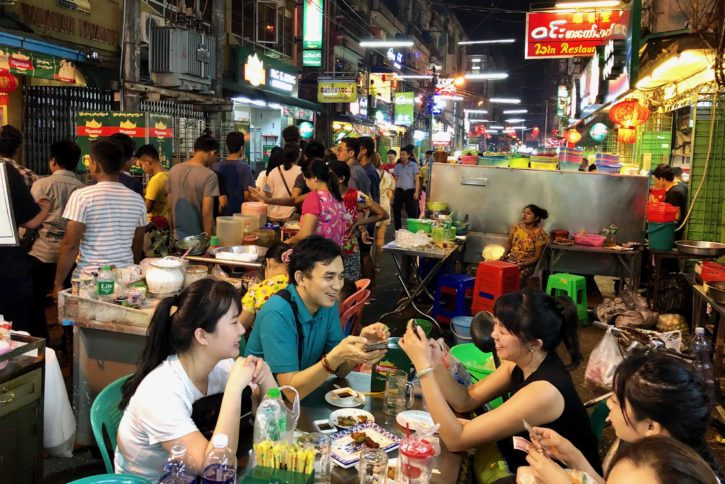
If you are keen to learn about street food in Yangon, Sa Ba Street Food Tours offers a carefully curated tour. That way you know what to avoid eating!
How to avoid getting sick
Much as I like street food in Yangon’s Chinatown area, I have suffered the consequences of over indulgence – particularly with fried foods.
- If you have a sensitive stomach, avoid eating fried foods at all costs – often the oil is reused, which might not exactly be what you are hoping for.
- Hygiene is a cause of concern in Chinatown – avoid eating at places close to garbage dumps and ill-lit streets.
- Always insist on “freshly prepared” food – fried rice or noodles. Watch it being cooked.
- Go easy on the spice.
- Thumb rule – anything that doesn’t look good, probably wont taste good. If your food looks like it belongs in the bin, it probably does.
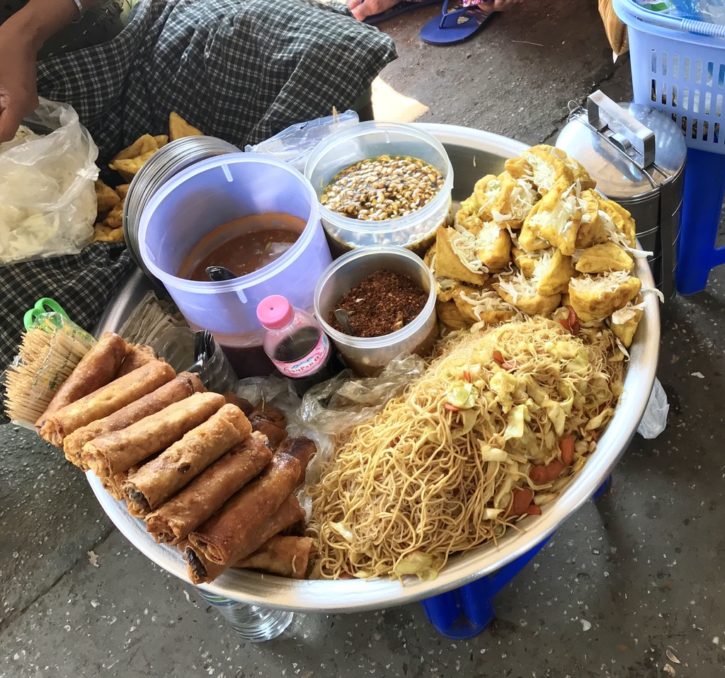

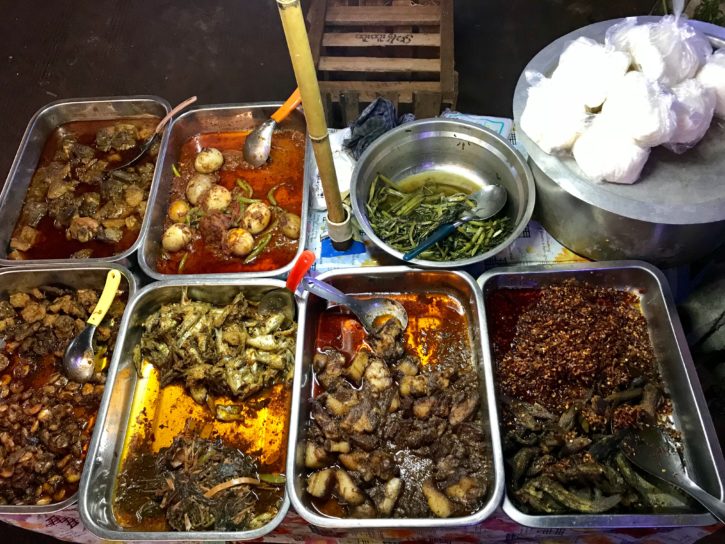


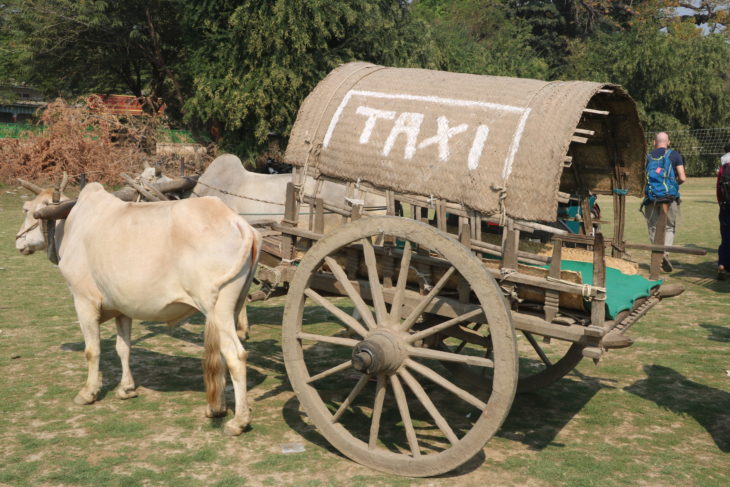
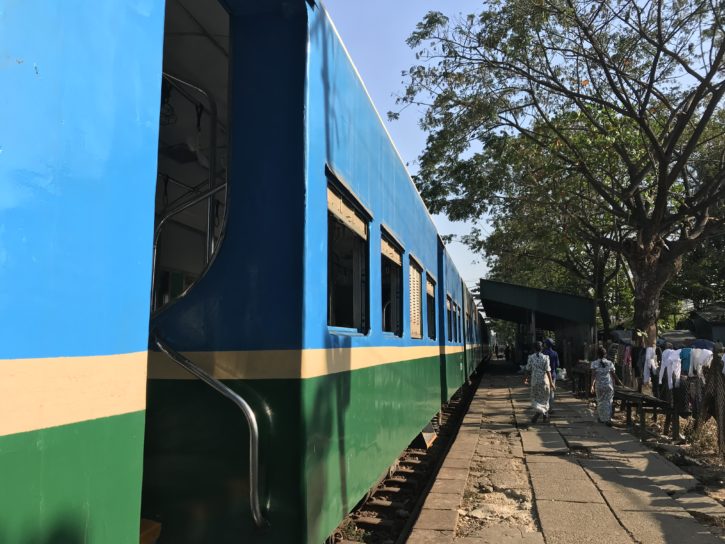

I do Like Street Food…Please do Visit Manglore…So I Can Join With You.